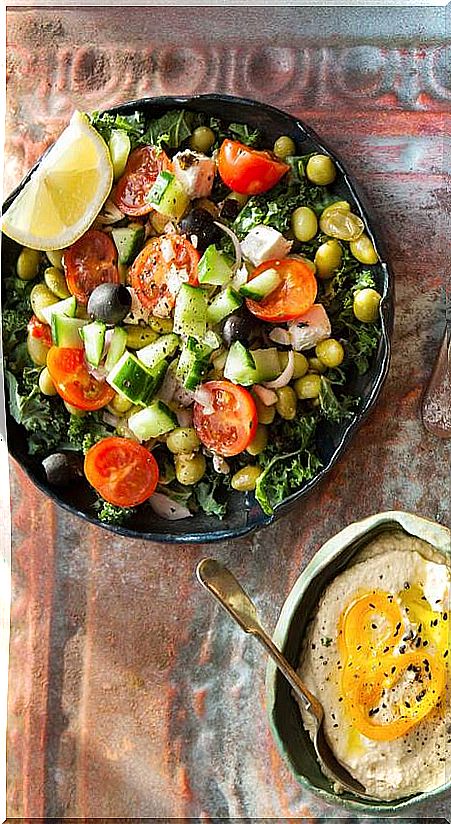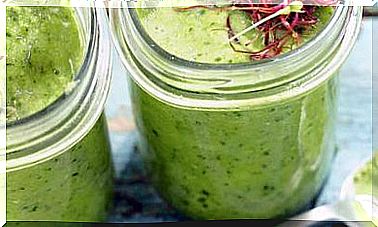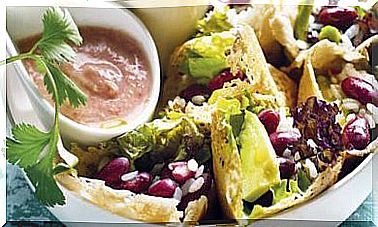8 International And Healthy Cuisines To Go Around The World

Fusion gastronomy at home
It is interesting to test what happens when exotic ingredients are incorporated into local recipes.
Or the other way around, when exotic recipes use known flavors to replace original ingredients that may not be found. The result will be different but satisfactory.
In the absence of turmeric, for example, serve a little saffron.
It is not about distorting but about adapting : a couscous is still a wheat pasta with a neutral flavor that can be accompanied by well-known vegetables or vegetable and legume stews.
As for the local cuisine, it is about playing around to obtain contrasts. For example, you can add ginger to broths or miso to vegetables.
Basic Exotic Food Dictionary
Some of the foods or condiments typical of other culinary cultures are making their way into our markets.
Learn about their particularities and how they should be used to get the most out of them.
- Sesame oil. With a very concentrated flavor, it should be used in moderation.
- Algae. Source of minerals, if used in moderation, they add a marine taste to dishes. They must be washed and soaked before use.
- Basmati rice. Long-grained, loose and aromatic, it is the base of many Asian dishes.
- Glutinous rice. Medium grain with a lot of starch, steamed it is whole but with water it is pasty and moldable.
- Chilies. Dry or fresh, you have to devein them and remove the seeds to moderate the spiciness.
- Chutney. With the consistency of jam, it is a sweet and spicy condiment at the same time, which is made by boiling fruits and vegetables for hours with multiple seasonings.
- Turmeric. A bit bitter and yellowish spice used in curries.
- Curry. Spice mix.
- Noodles. Buckwheat, white wheat, rice, soy, soba, udon … All are used boiled, blanched or fried.
- Ginger. Spicy and very healthy root that accompanies many Asian recipes.
- Miso. Fermented pasta with soybeans and cereals. It is used as a condiment and base for soups.
- Soy sauce. Better to buy a good tarnari or soyu, fermented and unpasteurized, to take advantage of its flavor and digestive enzymes.
- Sesame. The lightly roasted seeds have a nutty flavor. They serve as a dressing and provide calcium.
- Tahini. Sesame paste very common in the Middle East.
- Tofu Derived from soy, neutral and versatile. Provides vegetable protein without fat. It has to be marinated or cooked to improve its cold nature.
- Rice vinegar. Rice wine-based seasoning.
- Wasabi. Pasta made with horseradish root. It is sold in powder or paste. Its refreshing flavor is intense.
Recipes for a trip around the world
The contact with other cultures has allowed us to discover new ways to enjoy dishes and gastronomy.
This is a selection of recipes from different continents with which it is worth surprising the palate.
- China. Sweet and sour sauteed vegetables, soups with tofu or Chinese ravioli, Cantonese rice, and stuffed and steamed dim sum.
- Greece. Salads with olives and tomato.
- India. The stewed and spicy lentils (dal), the flatbreads, the scented rice and the stewed okra. The samosas, stuffed and fried pasta that are crunchy and appetizing as a starter.
- Japan. Onigiri (rice balls) and sushi (rice rolls) that allow informal and healthy meals, vegetables and mushrooms in tempura, as well as miso soups, seaweed and tofu.
- Maghreb. Apart from the couscous, the harira and the great variety of tagines accompanied by loaves of flatbreads.
- Mexico. Unquestionably corn tortillas, a good source of carbohydrates. But also the slightly spicy guacamole, the stuffed zucchini flowers, the coriander and zucchini soups, the tamales and the molcajete sauces with tomato and fresh peppers.
- Middle East. The hummus, a very digestive vegetable protein wisely complemented with sesame, the mutabal of roasted aubergines, the tabouleh. The mezze in general and the seasoned vegetables.
- South America. Creole cuisine, fried green bananas, tropical fruits in salad and beans accompanied with rice as a symbol of popular wisdom regarding good eating.
- Turkey. Pilafs (brown rice) accompanied with a variety of nuts.









